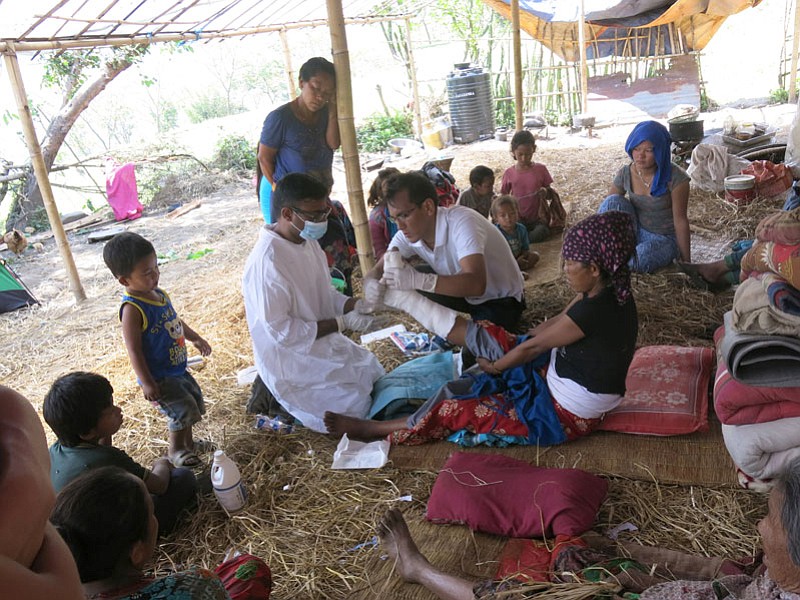Learn More
For more information about the America Nepal Medical Foundation, visit:
americanepalmedicalfoundation.com
Dipesh and Sagun Pokharel can only describe the early morning hours of April 25 one way: “Sheer panic.”
Sagun received a text message from her sister, who lives on the East Coast, at about 2:30 a.m. A massive 7.8 earthquake had rocked Nepal, the country where the Pokharels grew up and where much of their family still lives. The quake was centered northwest of the country’s capital, Kathmandu, but the destruction was widespread.
Sagun turned on CNN and saw huge historical buildings reduced to rubble.
“Your mind races to the worst possible outcome,” Sagun said.
For the next two hours, the Camas couple tried every method they could think of to contact their family members and friends living in and near the city. Between the two of them, they have about 50 members of their extended families still in Nepal.
Cellphones weren’t working. Land lines were down. Luckily, the 4G network was functioning. Finally, using an Internet-based phone service, Sagun was able to reach her parents and brother, who live together in Kathmandu.




